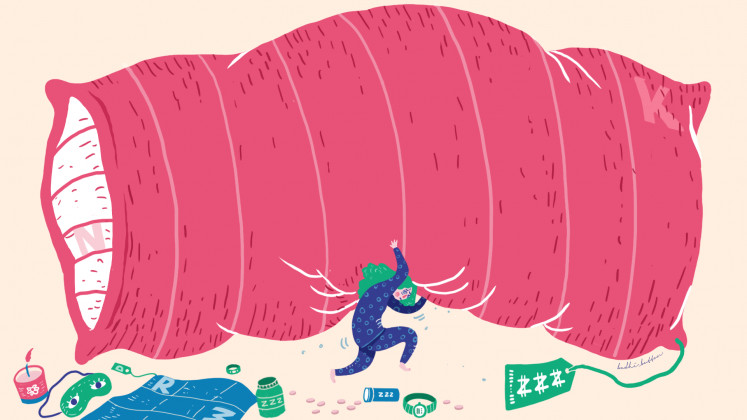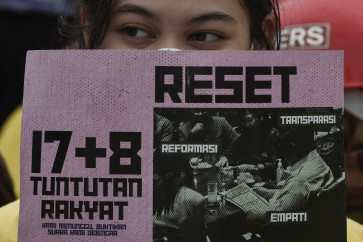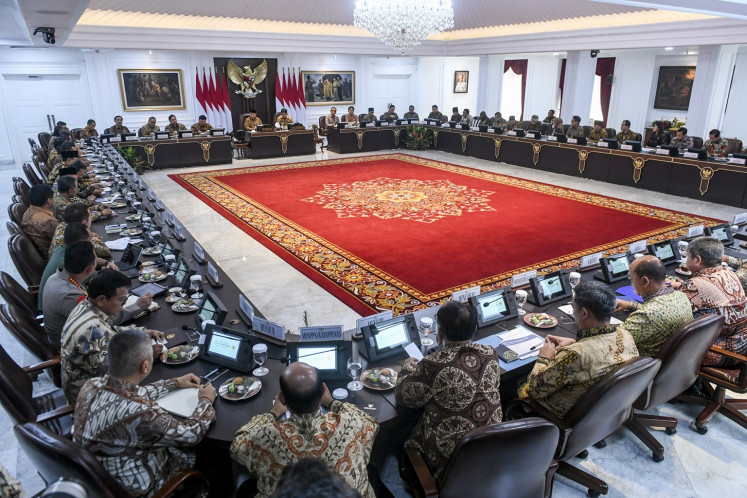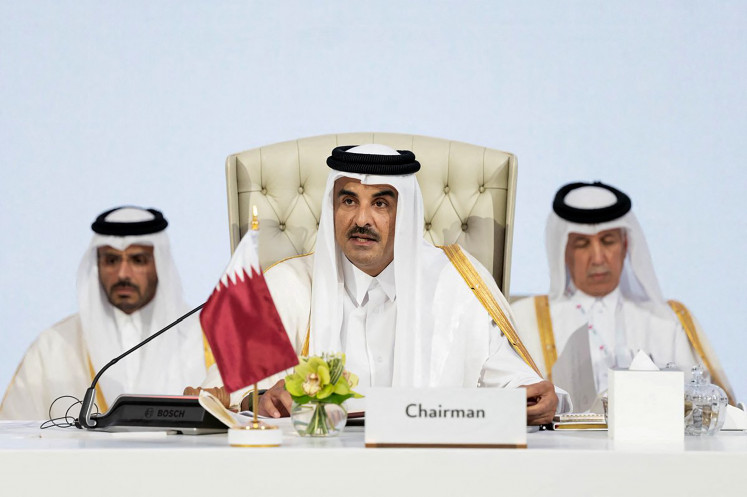Popular Reads
Top Results
Can't find what you're looking for?
View all search resultsPopular Reads
Top Results
Can't find what you're looking for?
View all search resultsJulian Reuter: Rattan reanimation
Julian Reuter - JP/Ika KrismantariDesigner Julian Reuterâs fascination with rattan started seven years ago and once it began there was no going back
Change text size
Gift Premium Articles
to Anyone
Julian Reuter - JP/Ika Krismantari
Designer Julian Reuter's fascination with rattan started seven years ago and once it began there was no going back.
Seven years ago Julian Reuter saw rattan products during a visit to Bali. The wooden material perplexed him because it came in a form that he had never seen before ' with a large diameter instead of a small one.
His curiosity encouraged him to study rattan and carry out some research and he has been involved with the material ever since.
Fast forward to 2016, 30-year-old Reuter has become a rising star in design on the European continent thanks to his breakthroughs in rattan processing.
He won the 2016 German Design Award and snatched the prestigious Salone Satellite Award a year before that. Reuter received the awards for an invention of his that has revolutionized rattan processing.
The German has created a machine that can produce a new kind of rattan that is more playful and colorful in design.
The product is called Karuun, after the Indonesian words harta karun (treasures).
'We want this to be identified as Indonesian, so they can take care of this wood material a bit,' Reuter told The Jakarta Post in an interview during a seminar in Jakarta.
Karuun is a result of years of research and hard work. It began with Reuter's bachelor's thesis, which was titled Rattan Reanimation.
'[Rattan] is like someone who is dying and I am helping it live, reanimating it,' Reuter explains.
From the thesis' findings, Reuter developed a machine that put textures and vibrant colors into rattan. With the machine, he re-created the old-age wooden material into rattan products with vibrant, modern and colorful designs.
Reuter's designs have received positive feedback from various parties. Among them is the German government, which awarded Reuter with a scholarship to further develop Karuun.
Reuter and his friend, Peter Kraft, then established a company called Out for Space to represent Karuun as a brand.
'Out for Space has existed only two-and-a-half months but the idea has been going on for two years,' Reuter explains.
Reuter admitted he did not expect his creation would be such a hit in a relatively short timeframe.
'It is just the beginning, and it is also my first time, but suddenly you get all this [awards etc.]. I see it as a chance also for Karuun to grow as big as I have wished for,' said the man, who has earned the title 'Leonardo DiCaprio of the design world' from his Indonesian colleagues after his recent win at the German Design Awards.
Rattan exploration: Rising designer Julian Reuter creates a breakthrough in rattan processing, producing a new kind of rattan that is more playful and colorful in design.
One of his ambitions is to start a materials revolution with Karuun.
Reuter's revolutionary mentality is palpable for all to see. In a seminar filled with other people sharing his profession and his passion, Reuter goes against the grain in a skater hat and messy hair.
'I don't want to be identified as a designer. That would be death for me. Everyone has their own way to show their uniqueness. [I like to be] just Julian, as a person,' he said.
Reuter said he never dreamed of becoming a designer. When he was a little kid, he shared the aspiration of most German kids of becoming a professional soccer player.
Reuter said design was not a popular profession in his home town, Kissleg.
'I grew up in a farm village. The image of designers was not very popular. They always said designers were artists, and becoming an artist meant you couldn't earn money,' he said.
But Reuter manages to prove otherwise. He even set up his company's office in Kissleg.
'It is good for us. We exist in the area where we grew up and feel support from the local people. If we go to cities like Berlin, Paris and London, there will be heavy competition and we don't want to take part in that,' he said.
When it comes to the creative process, Julian said he had a different approach, inspired by German designer Ingo Maurer, who was known for his playful methods.
'When I design something I think about the opposite. When I make a chair for example, the opposite of sitting is standing, and instead of thinking about four legs, how about one?' Reuter said, adding he also liked to put some humor in his design. A unique and peculiar coat stand is one example of his designs.
And seven years after Reuter's first encounter with rattan, the man is still in pursuit of more methods of developing Karuun.
His interaction with rattan has made Indonesia, one of the world's big rattan producers, his second home.
In the past six months, he had come to Indonesia three times. He has also prepared collaborations with local designers to revolutionize rattan production.
'I would really like to start a materials revolution with this Karuun. Because for me, rattan as a basic material can really solve many problems that we have with plastics.'












